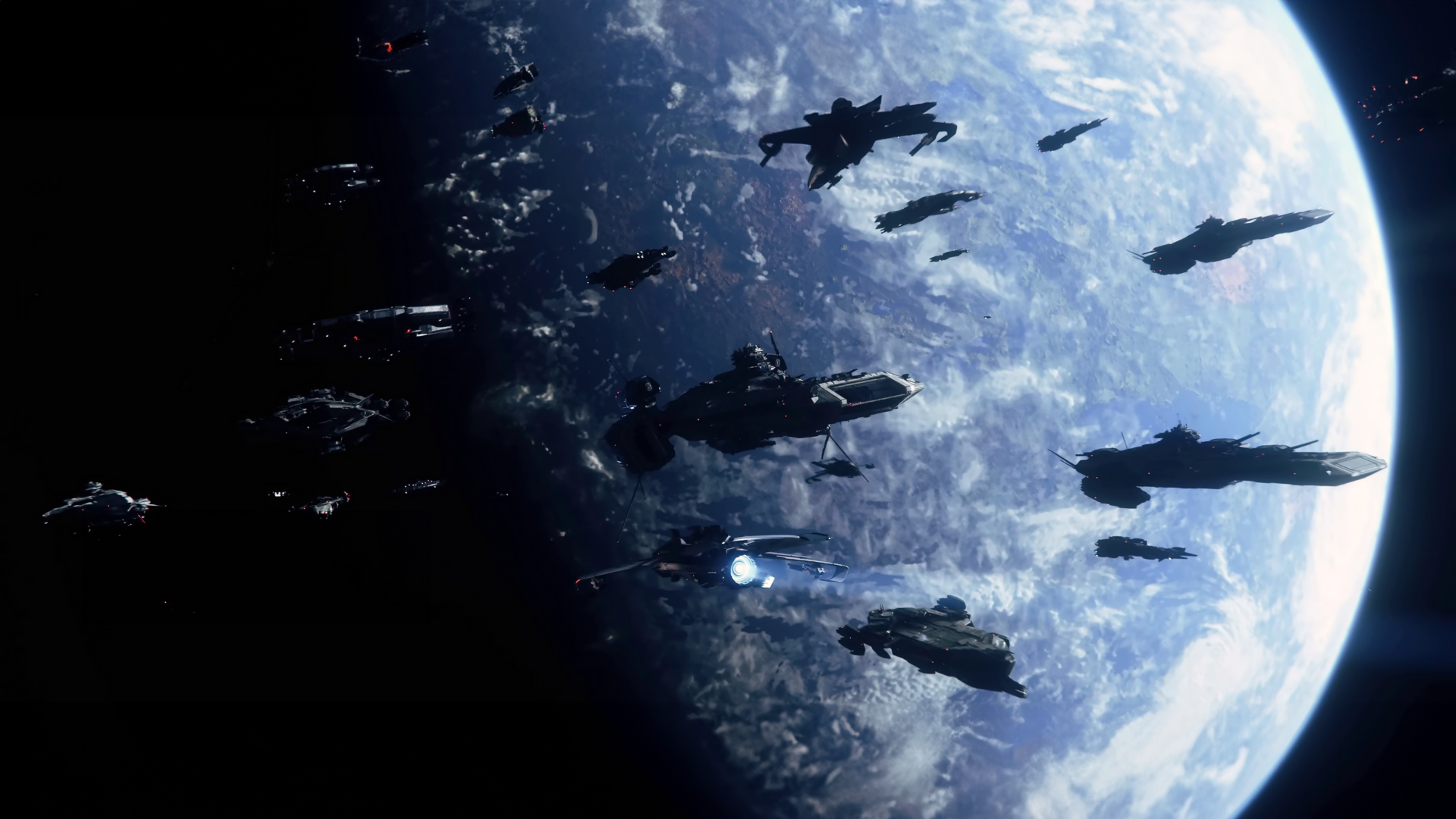A decade in development: The evolution of Star Citizen’s game engine
If someone ever asks me why I enjoy science fiction games, I will show them the impressive Star Engine trailer presented by Cloud Imperium Games and Chris Roberts at CitizenCon 2023. The trailer demonstrates the latest features and capabilities of Star Citizen’s game engine and speaks for itself. This 24-minute demonstration pays homage to Wing Commander’s opening scene created by Chris Roberts in 1990 (originally featuring the Origin System logo) and is an impressively seamless one-shot camera flight void of loading screens. It includes multiple star systems with smooth space-to-atmosphere-to-surface transitions (looking at you, Starfield), big cities with metro systems (Cyberpunk 2077, I keep an eye on you) and walkable areas, stunning space stations and vessels, as well as realistic physical effects like weather conditions, water surface manipulation, god rays, and human skin sweat and blood trails. Although the trailer demonstrated real-time rendering, the resulting video displays minimal stuttering and glitches.
Star Engine’s integral components encompass smooth data streaming from server to client, and procedural generation of planet surfaces, inclusive of flora and fauna, on both client and server ends at varying levels of detail. Additionally, persistence affects the entire game universe. Anything that is dropped, built, destroyed, or manipulated in any way will remain visible to all players until the game server is reset. Star Engine includes physically accurate volumetric cloud and fog generation that, in my opinion, look even better than those in the latest Microsoft Flight Simulator. It features an interactive fire-spreading system similar to Far Cry 2, a real-time asteroid generation and rendering system similar to, but much more detailed and interactive than No Man’s Sky, and procedurally generated biomes with dense forests and flowing rivers that evoke the atmosphere of Red Dead Redemption 2. And unlike Starfield or No Man’s Sky, planets in Star Citizen can have multiple biomes on their surface, from deep frozen hemispheres to lush forests to hot deserts.
Sure, Star Engine might not have all the newest graphical technologies that we’ve come to expect from engines like CryEngine, Unity, and Unreal Engine 5 (such as ray tracing or even path tracing and UE’s Nanites). Given the long development history of Star Citizen, from its beginning in 2010/2011 with CryEngine 3 to its later migration to Amazon’s Lumberyard engine in 2016, it is impressive to see all the completely new engine features, such as data streaming and smooth integration of an insane level of detail, achieved by the developers of Cloud Imperium Games over the years. The Star Engine has the potential to continuously improve and evolve as the foundation for a vast and immersive massively multiplayer online game. Its development will hopefully never finish but persist as long as there is a consistent revenue stream. Exciting new features like base-building, which will commence development next year, and the single-player story campaign Squadron 42, set within the same universe, make today the perfect time to explore the ever-changing world of Star Citizen. Don’t forget, the adventure is the ultimate prize.
So hold the line and take a look at the Star Engine tech demo, uploaded by YouTuber BoredGamer, to get a sense of just how powerful this game can be:
Star Citizen’s AMAZING Star Engine Demo
Hero image: Screenshot from Squadron 42: I Held The Line video, edited using the Generative Fill tool in Adobe Photoshop.


Reply article Reply answer